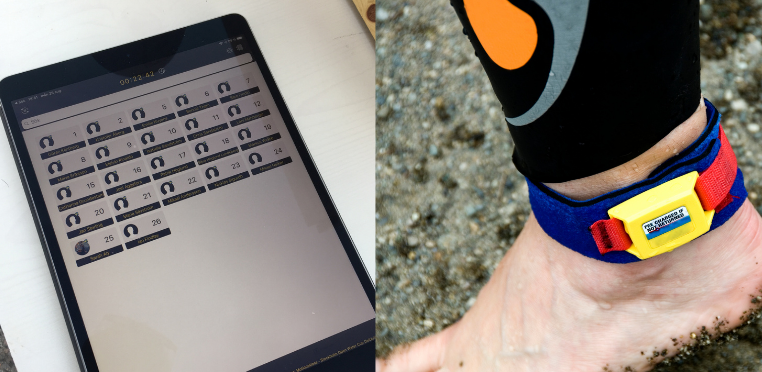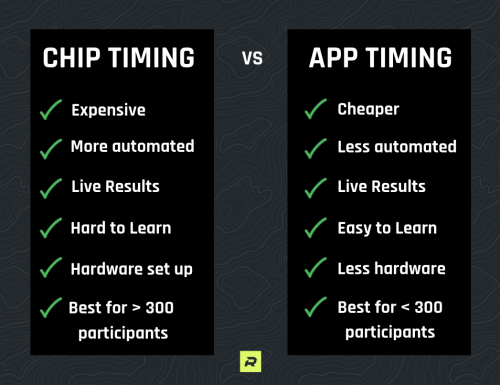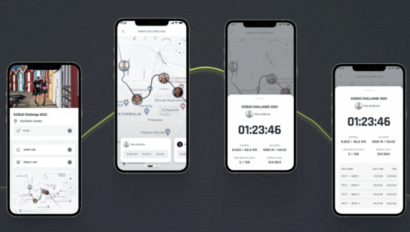App Timing vs Chip Timing – Which Should You Choose for Your Race?

Article updated 24 July 2024.
This article will give you the pros and cons of chip timing versus app timing for endurance races and outdoor events. See video format below:
When you start off as a race organizer, you are faced with the decision of choosing a timing method for your race. Unless you want to stand glued to the finish line with a stopwatch and notepad all day and get headaches over bad handwriting and herds of racers getting an all-important few seconds off their race time, you probably want an automatic or semi-automatic method for keeping order and sanity to the timekeeping and results.
RFID, or Chip Timing as we conventionally call it, has been the standard solution for race timing for ages, and the most common method organizers opt for. However, race technology is on the rise, and today there are handy alternatives to Chip Timing that can save you thousands and fit in your pocket – I am talking about App Timing with your smartphone or tablet.
At a glance – Chip Timing vs App Timing:

Chip Timing
How Does Chip Timing Work?
Chip Timing is a system based on RFID tags (Radio Frequency ID). This is a small item, usually worn by racers on the ankle in a bracelet or integrated in the number bib. This tag exchanges data with a chip radiofrequency reader using radio frequency (RF) signals. These chip readers are set up along the course to detect the chips for split times, and finally the finish line. Since this technology uses radio waves, the chips can pass the reader a few meters away. This is why you usually see mats or portals rolled out at split times, there to catch the radio wave signals from the chip your racers are wearing.
How to Set Up and Purchase Chip Timing Solutions
As you can imagine, Chip Timing required a fair deal of hardware and set up. The most common for larger races, is to hire the Chip Timing as a service, where the hardware and service during the race is included in the price.
You can also rent only the equipment yourself, and learn how to set it up. You can also buy a set of Chip Timing equipment that comes ready in a box, and figure out how to do it all yourself.
Although buying or renting equipment can save you a little money, Chip Timing is usually a heavy expense. For most organizers that we work with, Chip Timing equipment is the single largest expense by far in the race.
You usually have to calculate a service cost for personnel to be present at the day of your race, including accommodation and travel costs. You then have to pay for the rental of the equipment. On top of this, you also have to purchase chips for your participants that usually is sold at around 2-3 EUR per participant. So, to break down your costs, it could be something like this:
- Timing personnel: 500-800 EUR
- Rental of Equipment: 500-2000 EUR
- Chips for X amount of participants: X*2.50-3.50 EUR
So, for a race with 1000 participants, you are looking at a total cost around 3 000 to 5 000 EUR, depending on type of equipment, number of split times and how long the race lasts.
Pros and Cons with Chip Timing
As you just have seen, Chip Timing is expensive, so that can be difficult to swallow for newly started races or races that don’t exactly know how many participants they are going to get. And if you want to do it yourself, it is a steep learning curve to learn how to set up the equipment and get it right.
On the other hand, if you have the means to pay for it, a complete outsourcing of the timing to an expert vendor can save you lots of time and worry on race day. You can simply let go of this part of the race operation if you choose a vendor you can fully trust. Chip Timing is also recommended for larger races, we would say often if you have 300 or more participants, as other methods become challenging to manage.
Read more about Chip Timing for Your Race
App Timing
What is App Timing and How Does it Work?
Using a smartphone or tablet application for timing your race, is sort of a digitalized version of manual timekeeping, on steroids. How this works is that you have your ready start list in the app system, and can manage racers as they come to the start line, check them in, and set DNS etc. Then, you simply start the race, and run it in the app.
You click on participants as they pass a split time or the finish line, and if you have a complete provider, usually the system automatically updates live results in the app and website for spectators to follow.
The only equipment needed is a smartphone or a tablet (honestly, a few of them, if you want to make your life easier!)
How to Set Up and Use App Timing
The first thing you need to do is to choose your timing app provider. There are a few simple versions on the market that are free to use. If you want more sophisticated functions such as live results and perhaps classes and wave starts, you can pay a few cents per participant and upgrade the system with very useful functions. App Timing is a cheaper alternative, you are usually looking to pay 1-2 EUR per participant or a set subscription fee per year.
An important step in the preparation phase is to spend some time familiarizing yourself with the app. Do a few test runs of the race with your timing team to make sure everyone feels comfortable. This can usually be done with one practice session of 1-2 hours.
You have to plan your split times, and configure them in the app (on which km they take place). You also have to set up timing assistant accounts for the timekeepers that will be responsible for each split time. If you don’t have any split times, you can get away with just one person handling the timing at the finish line.
Pros and Cons with App Timing
App Timing requires some work input from you or someone in your team. It is manageable for up to 500 participants usually. But you have to think of the nature of your race – if it is a very long race and participants spread out along the course, you will be able to handle more people. If it is a very short race and racers finish in clusters, it will be more difficult. For example, we have had large Ultra and multi-sport races use our timing app for over 1000 participants. But then, they are spread out over an extremely large course that allows timekeepers to catch racers easily at the finish line. All in all, it is more work than if you would hire someone to do Chip Timing. It is also less precise than Chip Timing, as you always are exposed to the human error as you have to lick the bib number every time. However, the RaceID App for example, has built in functions to swap times and handle unknown racers to minimize this human error factor.
On the pro side, App Timing is significantly cheaper than Chip Timing. It is also much easier for a novice to learn how to operate it. It is also very easy to teach helpers and volunteers how to use the App Timing. With races using the RAceID Timing app, usually the volunteers can be taught in a single training session on the day before the race. All in all, App Timing is a neat and handy way to record times that may require a little work from your side, but it appears professional and modern to your participants as they get quick results and spectators can follow full live timing online.


